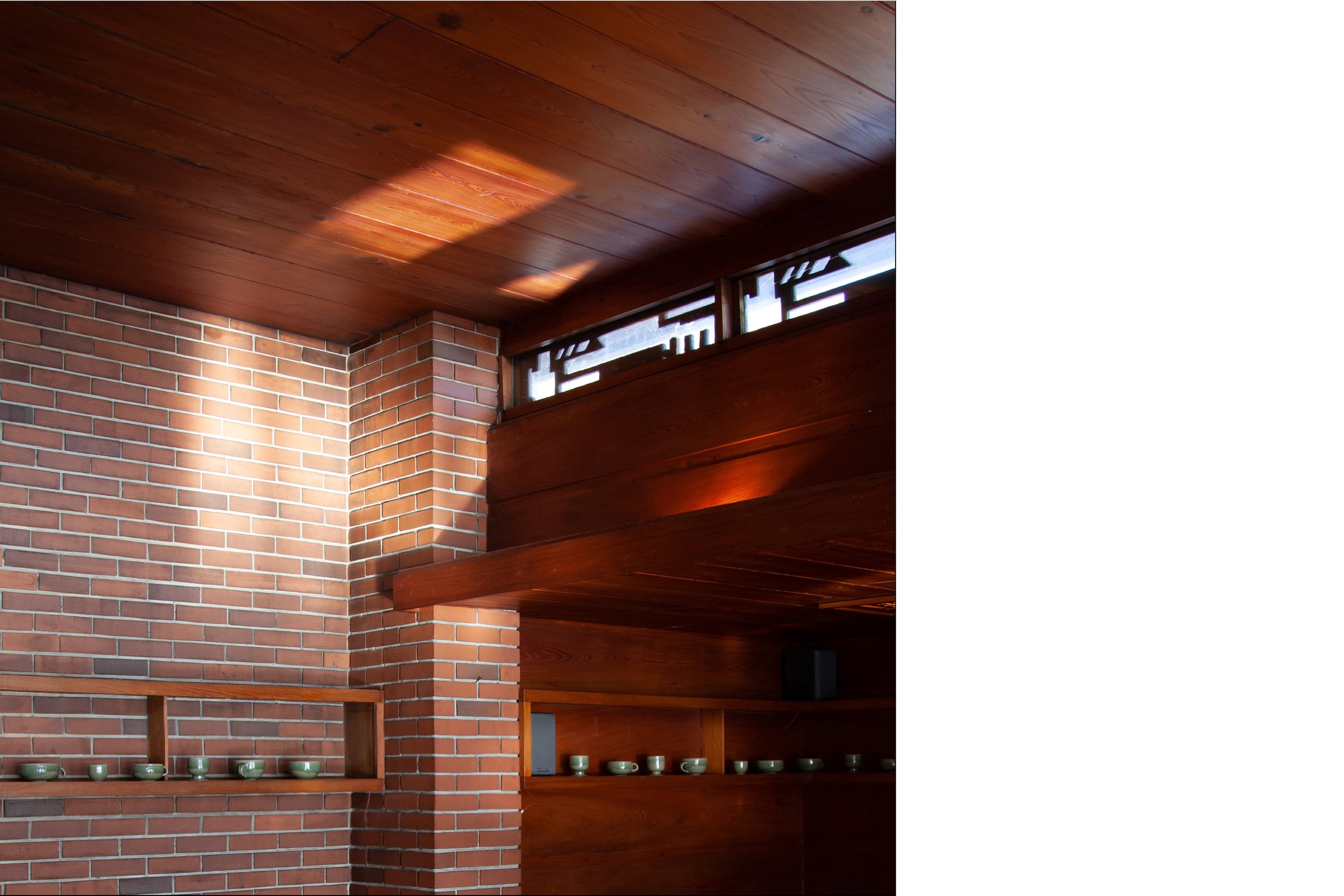The Project
Early this year, I brought my pottery (cups, goblets, and soup bowls) to Still Bend with the above ideas circulating in my mind. I arrayed the celadon-glazed ceramics in each room in the lower level of the house. The photos on the previous page is a continuation of this installation. In turning the house into a gallery and speculating what this “conversation” could look like, I wanted to set the terms. Using the camera to frame the view, the pots repeat and improvise their own rhythms within a backdrop of Wright’s limited material choices - warm reds from the brick to the wood to the floor to upholstery. The deliberate square crop contrasts the dramatic horizontality of the house, and partly abstracts all elements. The ceramic objects join in the economy of materials of the house. Where does a pot end and where does it begin? Where does pottery end and where does it begin? Practicing pottery is about exploring and continuing a timeline: from the earth, the soil, the excavation, harvesting it, processing, molding, the wheel, the firing kilns; to use, and store, and gather dust, and sometimes break, and more dust, to tea, to family, to hosting guests, to setting the table, to making a memory, to a photograph.
In another sense, where does pottery begin for me? For me, pottery begins with architecture, and form-making. I am and have always been attracted to buildings and spaces with expressive but simple spatial manipulations; Chiseling, addition, subtraction, slab, column, aperture, negative space. Only the best architecture retains this type of clarity and intention, where the architect is not only a master builder, but, most clearly, also a sculptor, or a potter. What better body of work to exemplify this than Frank Lloyd Wright? Still Bend (Schwartz House) is a canonical, smaller-scale work, that bears many of the master’s space-building techniques. The structure is spun from and centered around the two-fireplace core, with brick piers establishing the primary rhythm of the main living room/nave; and, first - wood, then - glass, settling between them to complete the enclosure.
In that logic, I brought the pots home. To where they come from, to where my thinking about form began. (An extended concept of a practice - architect - potter - photographer.) I want the viewers to hesitate about where the nexus of my project lays. Clearly, it departed from being just about ceramics, contending with my interest and background in architecture, and the digital photograph as the medium of representation and delivery. I do hope that something of the object quality of the pots is retained into the 1x1 aspect ratio, syncopated documentation of the project.
In 1999, The artist-writer-potter Edmund DeWaal installed porcelain objects at High Cross House in England, a modernist house from the 1930’s. His groupings of pots were placed throughout the home: hidden in cupboards, set on the table, on a mantle. DeWaal employed strategies of multiplication, repetition, concealment, and revelation. His ideas about the relationship between ceramics, spatial narratives, and architectural spectacle have widened the potential of pottery by providing a way to see references beyond the purely formal. DeWaal often talks about his multiple pots as “cargoes” giving allusions to the fraught connections between East and West embedded within the objects’ histories. He has likened objects to families as they travel and become part of the diaspora.
For me, this blurring of distinctions (craft and conceptual art, functional object and sculpture) has been an incredibly useful reference. With my own intervention, I hope to bring my work full circle, to merge the gap between an artistic agenda and architectural inclinations into a singular approach. This approach, at its core, is to think deeply about seemingly modest objects so as to amplify the hidden universe and stories within them.
Please share your thoughts and insights below. I would love to hear them. <3









